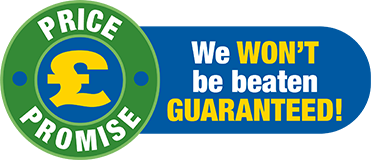Tyre Sidewall Markings
What does the writing on the side of my tyres mean?
1. TWI (Tread Wear Indicator)
TWI may be found in the shoulder or upper sidewall part of some tyres.
The marking is placed on the tyre to indicate where the tread wear indicators are located across the tread pattern. When these special markers in the tread pattern become flush with the remainder of the tread, it indicated the tyre is, or is about to become, illegal, because of lack of tread depth.
2. The tyre size designation
3. Radial
The word 'radial' to identify radial ply tyres. R in size marking also indicates radial ply tyres
4. Tubeless
The word 'tubeless' to identify tubeless tyres (or 'tube tyres' (optional) where appropriate).
Various additional legal markings, some of which have no relevance to UK, or Europeans operations are also shown.
Legislation requiring tyres fitted as replacements to carry an 'E' type approval number became effective 1st January 1985.
Legislation requiring all passenger cars and their trailers to be fitted with new tyres to 'E' or 'e' type approved became effective on 1st January 1995.
5. Tyre Name
A commercial name or identity in some form
6. Safety Warning - for the consumer's information
Serious injury may result from:
Tyre failure due to under inflation/overloading. Follow owner's manual or tyre placard on vehicle.
Explosion of tyre/rim assembly due to improper mounting. Only specially trained persons should mount tyres.
7. 'E' Marking
All car tyres sold from 1st July 1997 must carry an 'E' marking. The 'E' or 'e' mark consists of an 'E' or 'e' followed by a number included in a circle of 12mm diameter or a rectangle. This symbol is followed by a further number.
The 'E' certifies that the tyre complies with the dimensional, performance and marking requirements of ECE Regulation 30.
The 'e' certifies that the tyre complies with the dimensional, performance and marking requirements of Directive 92/23/EEC.
The number associated the with the letter 'E' in the circle or 'e' in the rectangle is the code number of the government which granted the type approval (No. 11 for the British Government and a different identifying number for each of the other European countries involved).
The number outside the circle or rectangle is the number of the type of approval certificate issued for that particular tyre size/type.
8. Directional Pattern Tyres
Tyres with directional or asymmetric patterns should always be fitted such that they rotate in the correct direction as indicated by an arrow marked on the tyre sidewall. Failure to observe this is classified as a reason for refusal to issue an MOT test certificate.
If a directional tyre has to be fitted so that it rotates in the wrong direction (e.g. temporary use of a spare tyre following a puncture), then without undue delay the vehicle should be taken to a tyre sealer or garage so that a correct tyre can be fitted.
9. Manufacturer's name or brand name
10. Country of origin
Most tyres are marked with the name of the country or national geographic area where they were manufactured
Other markings of importance that may appear on the sidewall where applicable are:
Reinforced - a marking that is added adjacent to the tyre size marking to indicate that the tyre has a higher load carrying capacity than the standard tyre. The principal application of 'reinforced' type tyres is on vans and light trucks but they are also fitted to certain estate cars and caravans.
M and S - mud and snow - a marking to identify tyres with a winter tread pattern. In the case of 'V' or 'Z' tyres with no service description, the maximum load permitted at the maximum speed of the vehicle must be shown on the sidewall.


















